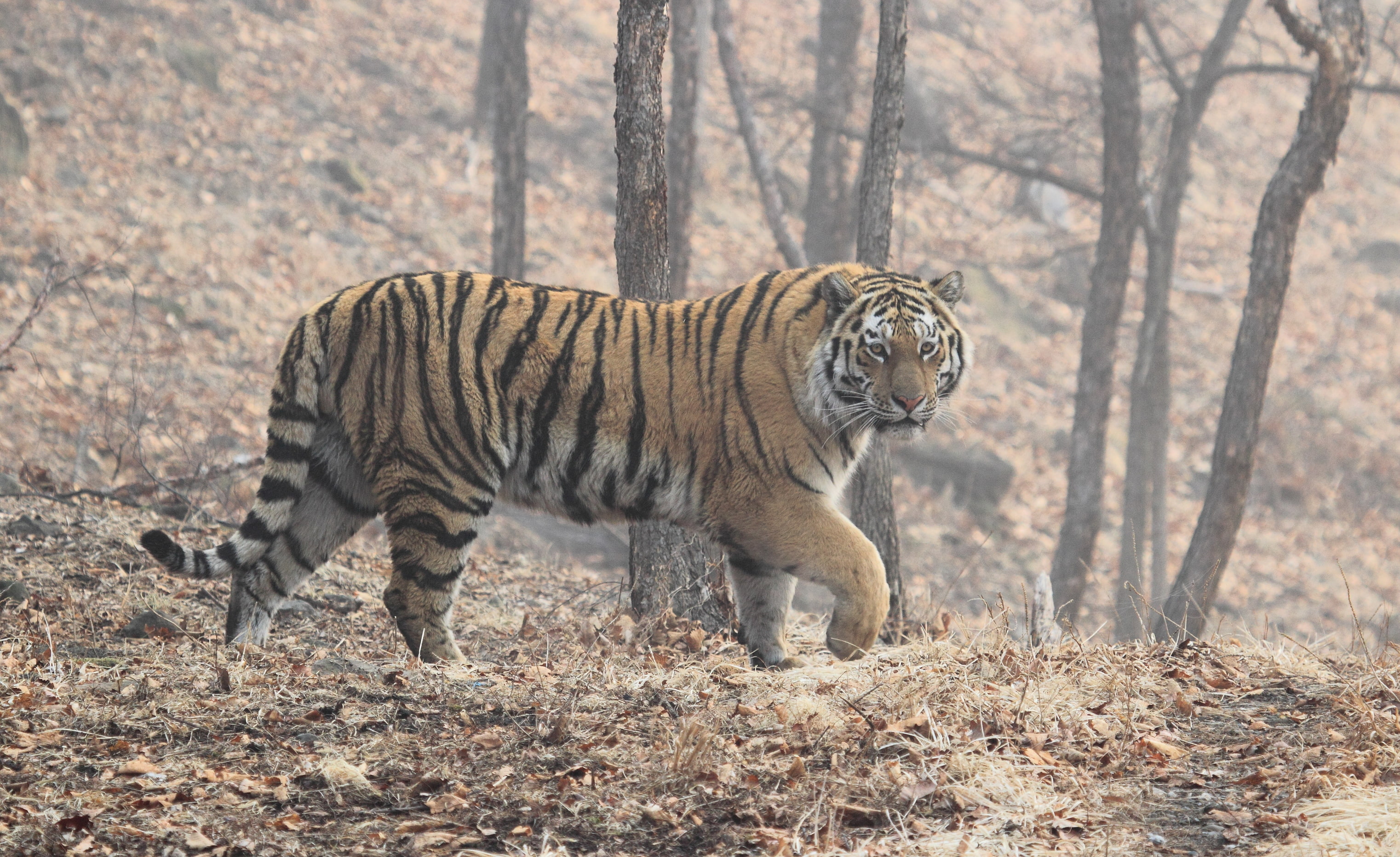A round table called "Protection of the feline and other rare species" was held in Moscow lecture hall of the Russian Geographical Society on June 17. It brought together leading experts in protection and study of rare species of animals.
Representatives of the Amur Tiger Center, the Land of Leopard National Park, the Institute of Geography of the Russian Academy of Sciences and Severtsov Institute of Ecology and Evolution Problems discussed the problems of the preservation and study of large wild cats in Russia, as well as new approaches and methods in the study of rare mammals.
The director of the Primorsky branch of the Amur Tiger Center made a presentation about the main activities of the organization. The Center's specialists are focusing their efforts on creating an effective system of fauna protection. Primorsky Krai is optimizing its hunting supervision system: operating group services are provided with enough fuel, they also are being equipped with snowmobiles and ATVs.
"Inspectors who can prevent poaching more effectively is not the only important thing, but also the fact that the population has become accustomed to the presence of such service. The operational group is always on the move, it changes location a lot, it has a significant preventive effect and reduces the level of poaching, "- said PhD of biological sciences, director of the Primorsky branch the Amur Tiger Center, Sergey Aramilev.
Among the research projects the ones which facilitate the work of criminologists, improve laws and regulations, effectively resolve conflicts between the man and the tiger and obtain accurate information on the number and distribution of rare animal are prior for the specialists of the Amur Tiger Center
"Of course, research work is important, but it does not save the rare animals directly, it only leads to their preservation. At the same time, most animals, including the Amur tiger, have already been studied. The research made it possible to develop and adopt the strategy for the conservation of the Amur tiger in Russia, the implementation of it is the prior objective for us at the moment, "- says Sergey Aramilev.
Deputy Director of science of the Joint Directorate of the State Nature Biosphere Reserve "Kedrovaya Pad" and the Land of Leopard National Park Elena Salmanova told the audience about the main activities of the Land of Leopard on preservation and restoration of the Amur leopard population.
"The number of Amur leopards in Russia has been holding within 30 individuals and remaining stable for decades. However, in 2013, the census of leopards showed that the population of the predator has grown up to 47 individuals, 30 of which (nearly 64%), are recorded in the Land of Leopard National Park - said Elena Salmanova.
According to Salmanova, such an increase is based on the number of effective environmental measures. Among them are the campaign against poaching on both the predators and their food - hoofed animals, the environmental education and the fight against forest fires.
The conservation of rare species of animals includes not only the fight against poaching, but also the monitoring of populations, the establishment of reintroduction centers and the study of diseases that could pose a threat to rare species.
For example, Sergei Naydenko, a leading researcher at Severtsov Institute of Ecology and Evolution Problems of the Russian Academy of Sciences, PhD of Biological Sciences noted that due to the increasing density of population and the increasing number of animals the probability of infection of wild animals with pathogens goes up. He underlined that it is necessary to develop recommendations on keeping domestic animals to save such rare species as the Amur tiger.
Experts from Severtsov Institute of Ecology and Evolution Problems of RAS conduct comprehensive studies of the Amur tiger, Amur leopard, snow leopard, polar bear and beluga.
During the round table the scientists noted that the preservation of rare species of animals require concerted actions of the inspectors, scientific research and environmental education. Only the work on all these directions can help to keep the royal tigers, elegant leopards and mysterious snow leopards in the country.

